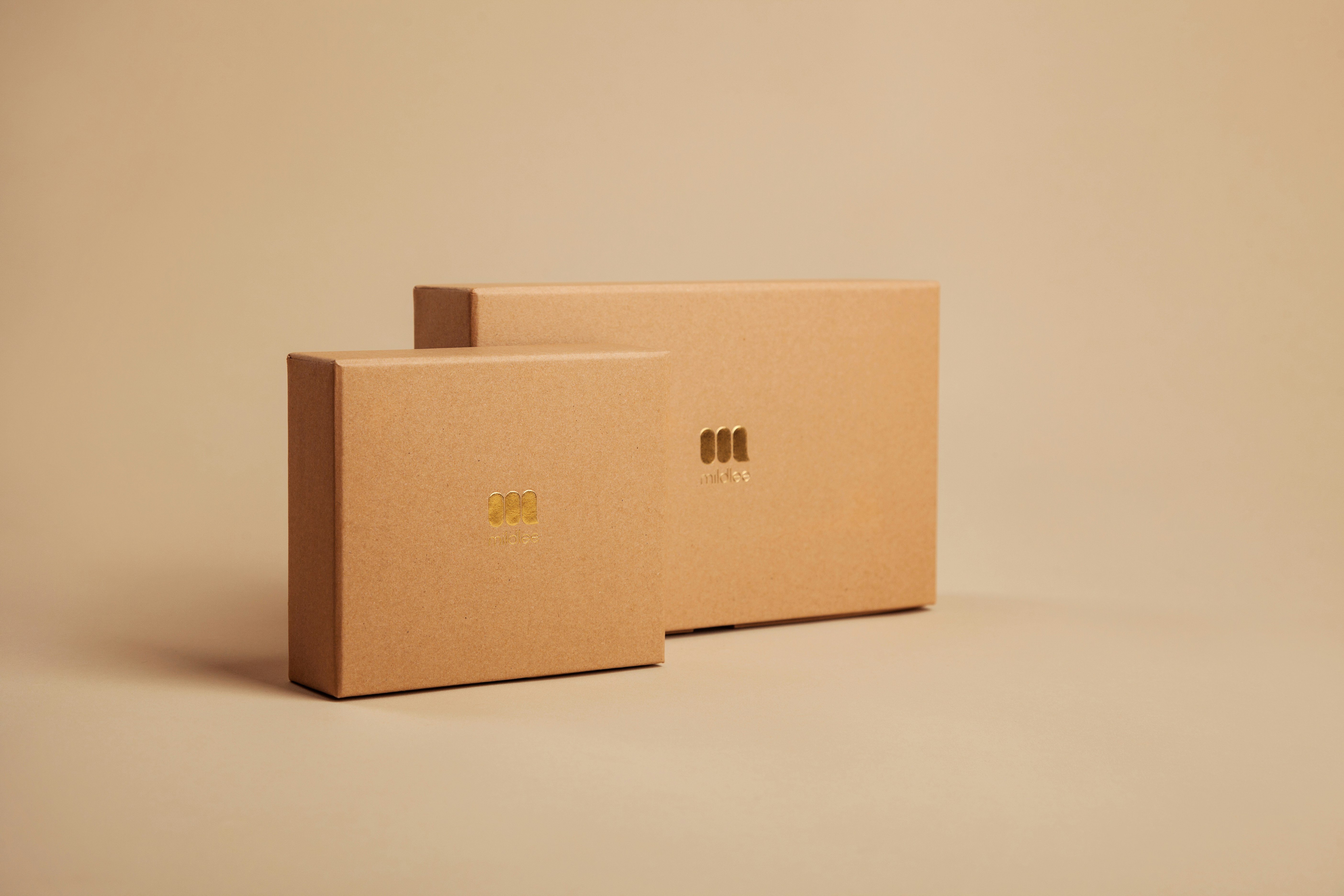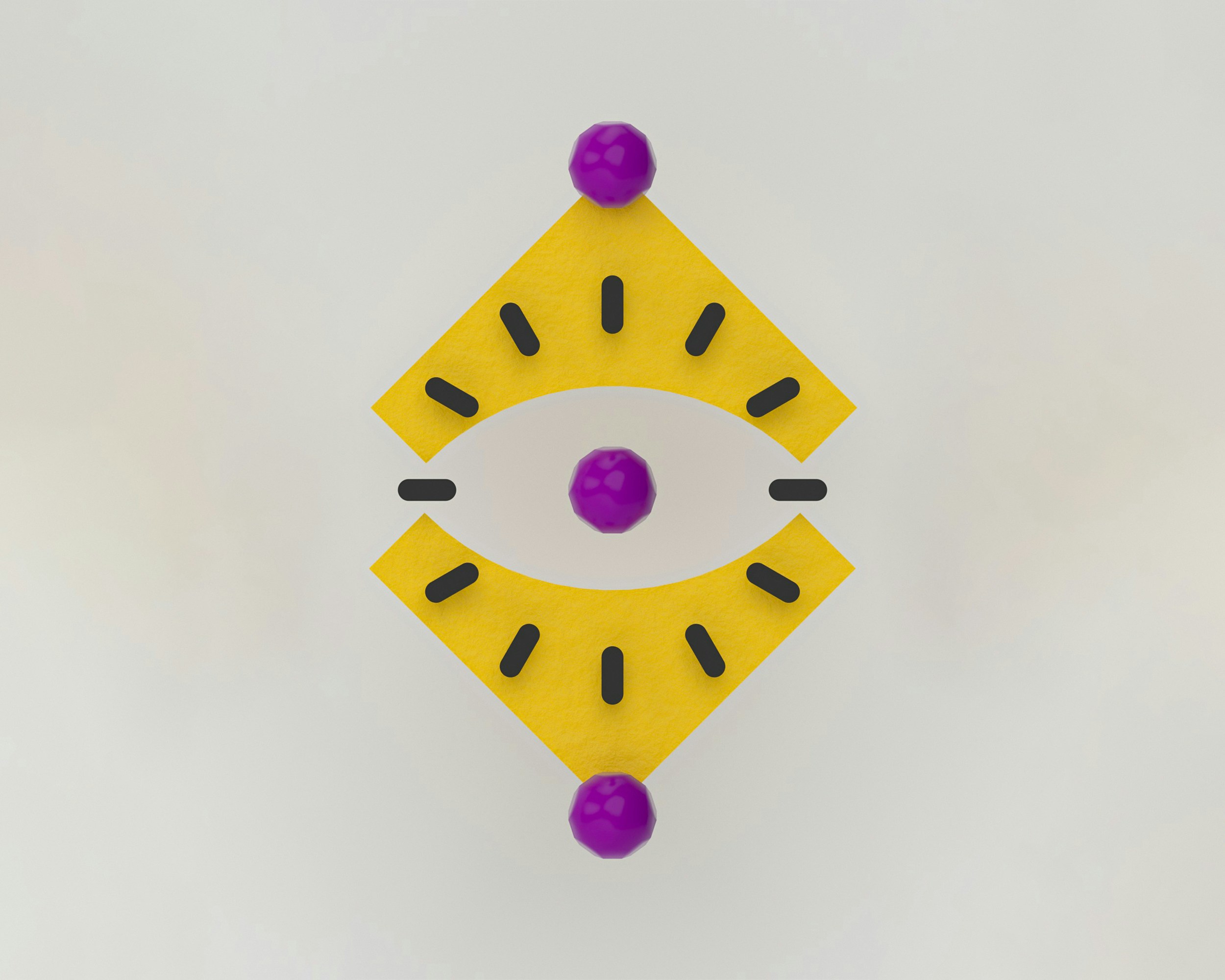Packaging: Definition, Functions, and Its Importance for Your Brand


Marketer Jane used to think of packaging as something secondary—until she found herself in a supermarket, standing in front of the shelf with healthy snacks. Holding her own product, which had just been released for sale, she watched as customers passed by. No one stopped. No one noticed.
A couple of minutes later, a teenager approached the shelf, reached out—and picked up a competitor’s product. The competitor's packaging was brighter, with bold text and an illustration that immediately communicated, "I’m a tasty, healthy snack, pick me."
Jane realized: packaging isn’t about just looking pretty. It’s marketing. It’s branding. It’s sales.
What is Packaging
Packaging is the physical casing of a product, ensuring its safety during transportation, storage, and use, while also performing a communication function between the producer and the consumer.
The Technical Aspect of Packaging
Jane knew well that beautiful packaging is important, but without a sturdy foundation, everything loses its meaning. She remembered how, once, during a tasting of healthy snacks, their bars became soggy and stuck to the wrappers due to a poor packaging choice. Since then, Jane always started any project by carefully considering the materials and structure, ensuring that the product would not only look attractive but also be reliably preserved.
Packaging is primarily a way to protect the product. It is made from various materials and is necessary to protect the product from damage, moisture, heat, cold, and other external factors. These can be boxes, bottles, cans, bags, tubes, or blister packs—anything that helps safely deliver the product to the consumer.
The Marketing Aspect of Packaging
Jane recalled how, once, their healthy snack brand nearly failed at launch: the bars were healthy and delicious, but the packaging was boring and unremarkable. After the design was updated—with vibrant colors and short, clear messages—sales nearly doubled. Jane was once again convinced: good packaging can sell without words.
From a marketing standpoint, packaging is a "silent seller." It must immediately attract attention, convey information about the product, and help the consumer decide: "Yes, this is what I need." The appearance of packaging often determines whether a customer will buy the product or pass it by. Studies show that up to 70% of purchase decisions are made right at the shelf, and packaging plays a crucial role at that moment.
The Designer’s Aspect of Packaging
When Jane worked on the healthy snack line for kids, she realized that simply making the packaging bright wasn’t enough. Together with the designer, they chose a round packaging shape (reminiscent of a toy), added characters to the wrap, and playful messages. The result: children started asking for "those fun bars," and parents happily bought them, knowing they were healthy.
For a designer, packaging is like a canvas. It needs to reflect what the brand stands for—fun or serious, caring or bold. Every detail matters—shape, color, font, images. Together, they create a product image that people remember and recognize among others.
The Evolution of the Concept of "Packaging" in History and Business
The concept of packaging has gone through a long evolution—from primitive containers made from natural materials to modern high-tech solutions with interactive elements.
From Functionality to Emotional Perception
Initially, packaging served a purely practical function—protecting the product. However, with the development of trade and marketing, it gradually transformed into a powerful tool for communication and differentiation. Today, packaging not only protects the product but also tells its story, sets a specific mood, and creates an impression.
Packaging as an Element of Brand Strategy
In modern business, packaging is seen as an integral part of a brand strategy. It should align with the brand's positioning, reflect its values, and distinguish the product from competitors. That’s why packaging development involves not only designers but also marketers, psychologists, and consumer behavior specialists.
The Main Functions of Packaging: More Than Just Protecting the Product
Modern packaging serves a variety of functions, which can be divided into several main categories.
Protective Function: Ensuring Product Safety
The primary task of any packaging is to protect the contents from mechanical damage, moisture, light, temperature fluctuations, and other factors that could negatively affect the product's quality. This function is especially important for perishable goods, fragile items, and products that require special storage conditions.
Physical Protection of the Product
Packaging prevents mechanical damage during transportation, loading and unloading, and storage. To do this, materials with cushioning properties, special structural solutions, and sturdy outer shells are used.
Barrier Properties of Packaging
Many products require protection from oxygen, moisture, light, or microorganisms. Modern packaging materials with barrier properties (multi-layer films, aluminum foil, modified atmosphere) significantly extend the shelf life of products.
Informational Function: Communicating with the Consumer
Packaging serves as a carrier of essential product information: ingredients, shelf life, storage conditions, usage instructions, manufacturer details. This information not only meets legislative requirements but also helps the consumer make an informed choice.
Mandatory Marking
The legislation of most countries requires certain information to be placed on packaging, such as the product name, ingredients, nutritional value (for food products), shelf life, storage conditions, and contact details of the manufacturer. This ensures transparency and protects consumer rights.
Additional Information
In addition to mandatory elements, packaging can also include additional information about the product: the creation story, production features, usage tips, QR codes linking to the brand’s website, or interactive content. This additional information increases the product's value in the consumer’s eyes.
Marketing Function: Promoting the Brand and Product
Packaging is a powerful marketing tool that directly influences purchasing decisions. It attracts the consumer's attention, sets the product apart from competitors, and creates specific expectations about the product.
Drawing the Consumer’s Attention
On overcrowded supermarket shelves, packaging must immediately catch the potential buyer’s eye. This is achieved through bright colors, unusual shapes, metallic elements, tactile materials, and other techniques that create a visual or tactile distinction.
Differentiation from Competitors
Unique packaging design helps consumers identify a brand and distinguish it from competitors. Distinctive color combinations, recognizable fonts, branded characters, or unusual packaging construction become visual triggers that consumers associate with a specific brand.
Logistical Function: Optimizing Storage and Transportation
Well-designed packaging makes it easier to store, transport, and account for products. Standardized sizes, barcodes, RFID tags, and other technological solutions optimize logistics and reduce associated costs.
Ease of Storage and Transportation
The shape and design of packaging must ensure efficient use of space during storage and transportation. Compact, easily stackable packaging reduces logistics costs and the carbon footprint of the product.
Marking for Accounting and Tracking
Modern identification technologies, such as barcodes, QR codes, and RFID tags integrated into packaging, automate inventory management, track product movement through the supply chain, and help prevent counterfeiting.
The Impact of Packaging on Brand Perception
Packaging is one of the most significant communication channels between a brand and the consumer. It forms the first impression of the product and can greatly influence perceptions of quality, premium status, and other brand characteristics.
Forming the First Impressions of the Product
Psychologists claim that first impressions are formed in a matter of seconds and heavily influence later perceptions of the object. In the case of a product, this first impression is most often created by the packaging. Visual elements, tactile sensations, and the sound of opening the package—all of these elements shape the consumer’s expectations before the product is even used.
The Psychology of Packaging Perception
Various design elements of packaging are perceived by the consumer on a subconscious level and trigger specific associations. For example, dense cardboard is associated with quality and reliability, minimalist design with premium status, bright colors with energy and youthfulness. A skilled packaging designer takes these psychological aspects into account when developing the design.
Packaging as an Element of Brand Identity
Consistent and recognizable packaging design is a key element in building a strong brand. It helps create a visual connection between different products of the same brand and strengthens its position in the consumer’s mind.
Brand Recognition Through Packaging
Distinctive packaging elements—color scheme, logo, brand graphics—make the brand recognizable even with a quick glance at the shelf. Coca-Cola, Tiffany, and Toblerone are examples of brands whose packaging has become iconic and recognizable worldwide.
Source: The Packaging Company
Conveying Brand Values Through Design
Packaging design should reflect the core values and character of the brand. For eco-brands, this might include using recycled materials and natural color schemes; for premium brands, a minimalist design with embossing and elegant fonts; and for children’s products, bright colors and playful elements.
For example, Lush — cosmetics in minimalist packaging: often with no packaging at all (such as solid shampoos), and when packaging is used, it’s made from recycled materials.
Source: Pinterest
The Impact of Packaging on Consumer Decisions
Studies show that packaging design directly influences purchasing decisions and the perception of product quality. Consumers are often willing to pay more for a product in attractive packaging, even if the product itself is identical to cheaper alternatives.
Emotional Connection with the Consumer
Well-designed packaging evokes certain emotions and creates a unique atmosphere around the product. For example, opening an iPhone box becomes a ritual due to the thoughtful packaging, which enhances the sense of premium quality and the uniqueness of the device.
Source: OneClub
From Packaging to Brand Loyalty
A positive experience with packaging (ease of use, aesthetic pleasure, meeting expectations) increases overall customer satisfaction and fosters brand loyalty. Some consumers even collect packaging from their favorite brands or find new uses for it.
Some brands make packaging such an integral part of the experience that fans carefully preserve even the wrappers. For example, Harry Potter fans often collect candy wrappers from themed stores like Honeydukes.
Source: Flickr
Modern Trends in Packaging Design
Packaging design, like any other area of design, is influenced by trends. However, in the case of packaging, these trends are often linked not only to aesthetic preferences but also to changes in consumer behavior, technological innovations, and global environmental challenges.
Eco-friendliness and Sustainable Development
Growing concerns about the environment have made eco-friendliness one of the key requirements for modern packaging. Brands are actively seeking ways to make their packaging more sustainable and minimize its environmental impact.
Biodegradable and Compostable Materials
An increasing number of innovative materials are emerging on the market that decompose naturally and pose no harm to the environment. These can include packaging made from algae, fungal mycelium, food waste, and other organic substances that fully decompose within a few months.
Minimizing Plastic Use
Many brands are reducing or completely eliminating plastic in favor of alternative materials such as paper, cardboard, and bioplastics. When it is impossible to completely eliminate plastic, companies strive to use recycled plastic and create packaging that is recyclable.
Minimalism and Functionality
The trend toward minimalism seen in design overall is reflected in packaging design as well. Simple forms, limited color palettes, and the absence of unnecessary elements characterize the modern approach to packaging design.
"Less is More": The Aesthetics of Minimalism
Minimalist design allows the consumer's attention to be focused on what matters most—the brand and the key characteristics of the product. The lack of visual noise makes packaging more memorable and contemporary.
Functional Minimalism
Minimalism in packaging design not only affects visual aspects but also functional ones. Modern packaging should be easy to use, open and close effortlessly, while ensuring reliable product protection. An additional bonus is the possibility of reusing packaging for other purposes.
Personalization and Interactivity
In the age of individualized marketing, personalization is becoming an important trend in packaging design. Brands are looking for ways to make their packaging more personal and interactive, thereby creating a deeper connection with consumers.
Customized Packaging Solutions
The development of digital printing enables the creation of personalized packaging with customer names, photos, or other individual elements. This approach is especially popular for gift products, limited editions, and special promotions.
Interactive Packaging and AR Technologies
Augmented reality (AR) opens new possibilities for consumer interaction with packaging. With a smartphone and a special app, packaging can "come to life," telling the brand's story, demonstrating ways to use the product, or offering entertainment content.
Use of New Materials and Technologies
Innovations in material science and manufacturing technologies allow for the creation of packaging with unique properties and characteristics.
"Smart" Packaging with Integrated Sensors
Modern technologies allow various sensors to be embedded in packaging, tracking product conditions, temperature, freshness, and other parameters. This is especially relevant for food, pharmaceuticals, and cosmetics.
Innovative Materials with Special Properties
Materials with antimicrobial properties, self-cooling or self-heating packaging, freshness indicator-integrated packaging, and other innovative solutions are emerging. These not only protect the product but also add unique consumer properties.
The Role of Artificial Intelligence and Neural Networks in Packaging Creation
Artificial intelligence and neural networks are increasingly being used in packaging development, optimizing the design process and opening new creative possibilities.
Generative Packaging Design with AI
Machine learning algorithms can generate multiple packaging design variations based on specified parameters and constraints. This significantly speeds up the concept creation process and expands designers' creative horizons.
Neural Networks as a Designer's Tool
Neural networks, such as DALL-E, Midjourney, or Ironov, can create visual elements for packaging based on text descriptions. Designers use these tools to generate ideas, create unique illustrations, and textures, which are then adapted for specific projects.
Source: ironov.ai
Automation of Routine Processes in Design
AI tools effectively handle routine tasks such as preparing layouts for different packaging formats, adapting designs to various sizes, and ensuring compliance with technical requirements. This allows designers to focus on the creative aspects of their work.
Analytics and Packaging Testing Using AI
Artificial intelligence not only helps create designs but also analyzes their effectiveness, predicting consumer reactions and identifying potential issues.
Predictive Analytics of Consumer Reactions
Machine learning algorithms, trained on large data sets of consumer behavior, can predict how the target audience will react to a particular packaging design. This allows optimization of the design even before the product hits the market.
Virtual Packaging Testing
With the help of computer vision and other AI algorithms, virtual packaging testing can be conducted: analyzing how noticeable the packaging is on the shelf, how quickly the consumer finds key information, and which design elements attract the most attention. This significantly reduces the costs of physical testing and speeds up the development process.
In Conclusion
Jane once again entered the supermarket and stood in front of a long shelf of healthy snacks. Over the past few months, she had re-evaluated her relationship with packaging: now she saw it not just as a beautiful cover, but as a whole story the brand was telling the consumer.
Each box, each jar spoke to her in its own language—some promised care for the planet, others invited her into a world of luxury, and still others cheerfully reminded her of a healthy lifestyle.
Jane understood: packaging is not just a means of protection or a way to stand out. It’s a bridge between the brand and the person, a moment of truth when a decision is made in just a few seconds.
While working on her latest project, Jane more and more frequently asked herself: What story will my brand's packaging tell? And what impression will it leave in the consumer’s heart?
Packaging is not just the outer shell of a product; it’s a multifunctional tool that solves a whole range of tasks—from product protection to brand image formation and sales stimulation. In an environment of high competition and market saturation, well-designed packaging becomes a strategic asset that can provide a significant competitive advantage.
Effective packaging should be functional, informative, noticeable, aligned with the brand’s positioning, and environmentally responsible. It should capture the consumer's attention, meet their practical needs, and create positive emotions.
Ultimately, packaging is much more than just a way to deliver a product from the manufacturer to the consumer. It’s a powerful tool for branding, marketing, and communication, the importance of which in modern business cannot be overstated.


